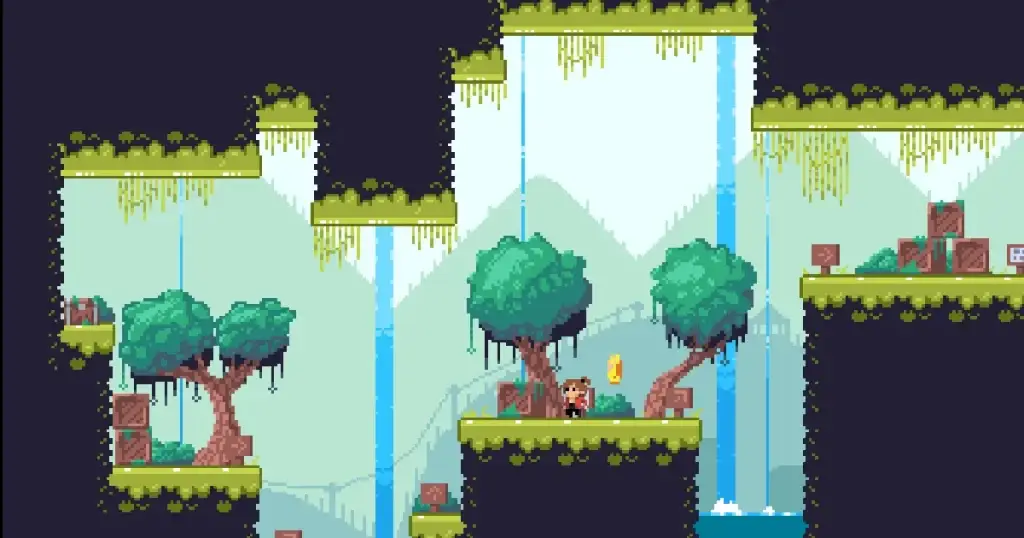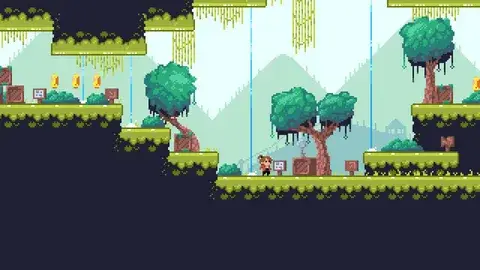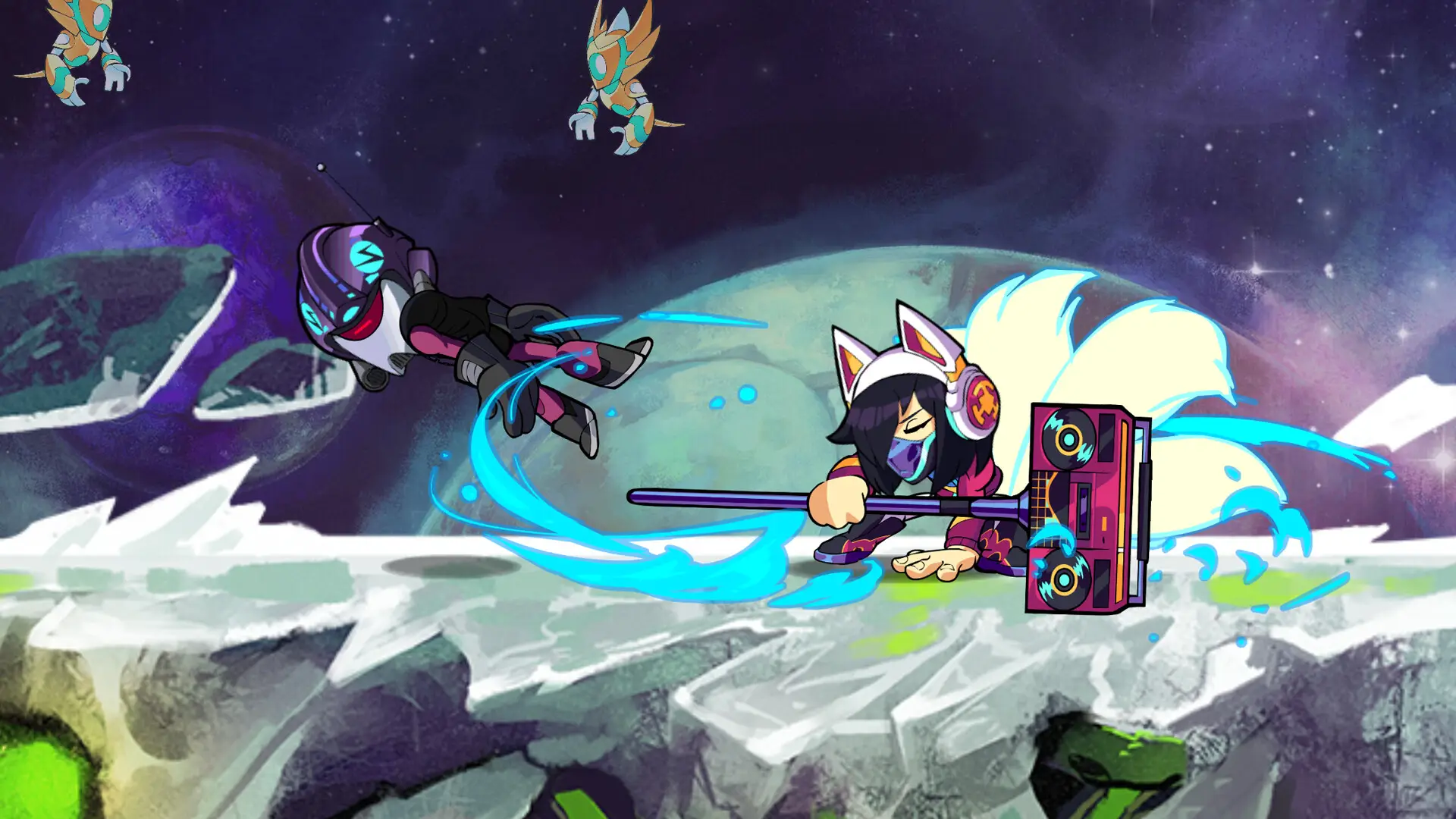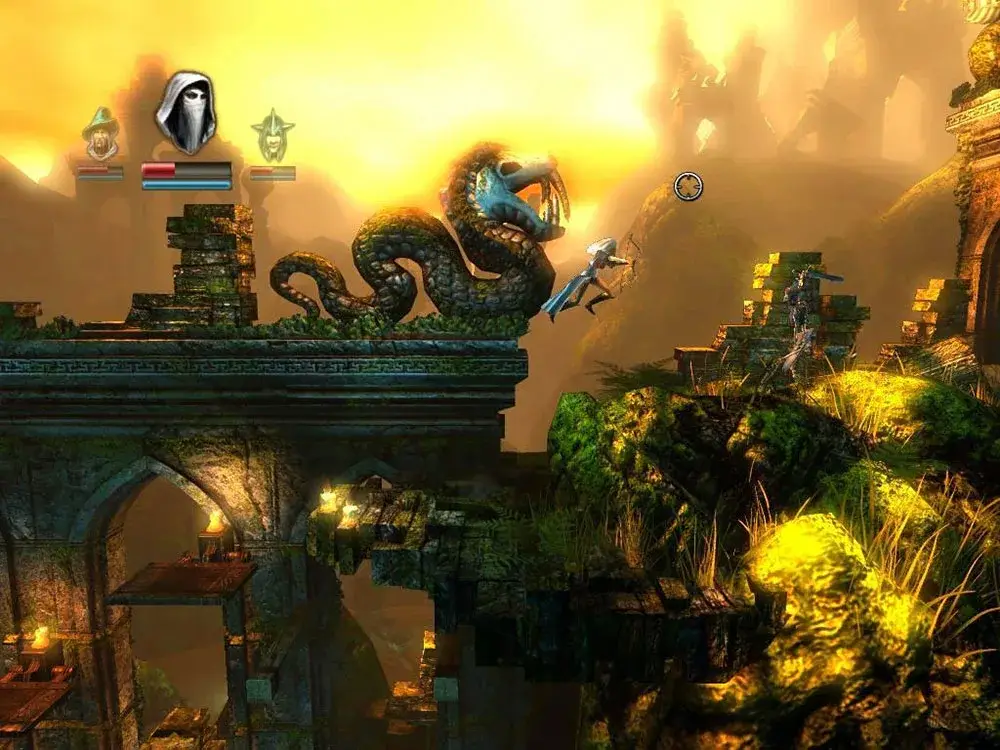Pixel art is back in fashion, and platformers are firmly at the forefront of this movement. These games not only impress with their retro style, but also with deep stories, unique mechanics, and engaging gameplay.
Celeste: An Emotional Journey to the Top
Celeste is a gem among pixel platformers created by Canadian studio Extremely OK Games (formerly known as Matt Makes Games). The game appeared in 2018, inspired by classic concepts and the desire to create a project that combines complex gameplay with a deep emotional story. The idea was born from a mini-project developed for a game jam, which later turned into a full-scale release.

The Vancouver-based studio took inspiration from retro games like Super Mario Bros. and Super Meat Boy to create a product that challenges the player’s skills while exploring the inner fears and doubts of the main character. Madeline, the central character, embarks on a journey to the top of the mountain, facing her own weaknesses and insecurities. Features:
- Unique mechanics: The mid-air dash mechanic adds depth to the gameplay, making each task challenging but doable.
- Graphics and atmosphere: The masterfully executed pixel platformer graphics are combined with a soundtrack by Lena Raine, creating a tense and touching mood.
Dead Cells: A pixel platformer with roguelike elements
Dead Cells offers a unique gaming experience created by the French studio Motion Twin in 2017. The idea for Dead Cells was born from the studio’s desire to combine dynamic combat and exploration in one project:
- History of creation. The developers from France experimented with genres to create a product that would stand out from other games.
- Year of release. The release took place in August 2017.
- Sources of inspiration. Castlevania, Dark Souls and Metroid served as the basis for the game’s mechanics and style.
Players control a hero who explores procedurally generated levels, fighting enemies and collecting resources:
- Battle mechanics. Users use a variety of weapons, including swords, bows and magical artifacts.
- Procedural generation. Each level is unique, making each playthrough a new challenge.
- Progression. Despite death, some resources are saved, allowing you to unlock upgrades.
Dead Cells has deep mechanics and high replayability. Pixel platformers with a story rarely reach such a level of detail.
Hollow Knight: a fairy tale in dark tones
 Hollow Knight immerses you in the dark and mystical world of the kingdom of Hallownest, created by the independent studio Team Cherry from Australia. The game debuted in 2017, instantly winning the love of players and critics thanks to its sophisticated approach to gameplay and visual style. The pixel project was inspired by classic platformers such as Metroid and Castlevania, as well as the unique atmosphere of Hayao Miyazaki’s works. Features:
Hollow Knight immerses you in the dark and mystical world of the kingdom of Hallownest, created by the independent studio Team Cherry from Australia. The game debuted in 2017, instantly winning the love of players and critics thanks to its sophisticated approach to gameplay and visual style. The pixel project was inspired by classic platformers such as Metroid and Castlevania, as well as the unique atmosphere of Hayao Miyazaki’s works. Features:
- Exploration of the world. The non-linear structure allows you to choose your own path, revealing the lore through atmospheric dialogues and mysterious artifacts.
- Battles. Participants use precise strikes, abilities and unique charms that customize the fighting style.
- Progression. The hero gains new skills, improves his equipment and opens up previously inaccessible areas.
What makes Hollow Knight stand out?
Every corner of the Hallownest world is filled with history, mysteries and unique aesthetics. Carefully crafted graphics harmonize with a dark soundtrack, creating an atmosphere of mystery and melancholy. Pixel platformers for PC rarely achieve such a level of artistic integrity, offering fans an unforgettable gaming experience.
Stardew Valley: A Pixel Farming Platformer
Stardew Valley, created by independent developer Eric Barone (known under the pseudonym ConcernedApe), was released in 2016. The project was born out of a desire to create a game inspired by Harvest Moon, but with the addition of modern mechanics and more freedom of action. The development of the platformer took more than four years, with Eric working alone, creating everything from pixel art to the music:
- Country of development: USA.
- The idea: to give players the opportunity to explore rural life through building a farm, developing relationships and exploring the world.
- Year of release: February 2016.
Gameplay and features
Users create a farm, engage in farming, fishing and communicating with villagers:
- Variety of activities. Farming, fishing, mining and interacting with NPCs.
- Flexibility of gameplay. The game offers freedom of action and unique development scenarios.
- Aesthetics. Simple but expressive graphics help to relax.
The project is ideal for those looking for a calm and exciting process. Among pixel platformers in retro style, it stands out due to the ability to build your own world and influence the plot.
Terraria: a world of adventure and creativity
Terraria offers exploration of a huge open world with elements of construction and combat. The project was developed by Re-Logic studio, founded by Andrew Spinks (known under the pseudonym Redigit). The release took place in 2011, and the game quickly gained popularity due to the unique combination of platformer and sandbox elements.
The inspiration for the creation of Terraria were classic projects such as Minecraft and Metroid. They motivated the developers to combine exploration, construction and combat in one gameplay. Features:

- Crafting. Crafting various types of weapons, including swords, crossbows, magic staffs and firearms. The building section includes houses, fortresses, farms, and decorative objects such as statues and fountains. These elements allow you to tailor the gameplay to each player’s style, creating unique worlds.
- Exploration. The world is full of secrets, including hidden caves with unique biomes and treasures. Players can find underground treasure rooms filled with rare resources such as mithril ingots or magic crystals. Caves vary from lava lakes in deep dungeons to icy tunnels filled with frozen chests. Some of them contain artifacts that enhance the character or open access to new areas.
- Combat. Exciting boss battles require strategy and skill. Terraria offers a variety of bosses, such as the Eye of Cthulhu, a huge flying eye that attacks with waves of minions, and Skeletron, who requires precise movement and agility to avoid the powerful attacks of his skeletal hands. The Wall of Flesh, one of the most memorable bosses, takes up the entire screen and moves straight towards the player, creating a tense atmosphere. Each boss has unique mechanics, making each fight a vivid challenge.
Terraria stands out for its huge freedom of action and deep mechanics. New pixel platformers rarely reach such a level of creativity and scale.
Conclusion: A choice for everyone
 Pixel platformers continue to inspire fans of the genre with their diversity. From the emotional journeys of Celeste to the endless possibilities of Terraria, each project offers a unique experience. These games show that pixel graphics do not limit, but reveal the potential of developers and give players unforgettable impressions.
Pixel platformers continue to inspire fans of the genre with their diversity. From the emotional journeys of Celeste to the endless possibilities of Terraria, each project offers a unique experience. These games show that pixel graphics do not limit, but reveal the potential of developers and give players unforgettable impressions.
 en
en  de
de  ar
ar  es
es  nl
nl  hi
hi  fr
fr  it
it  pt
pt  el
el 











